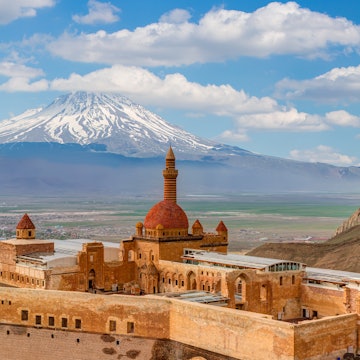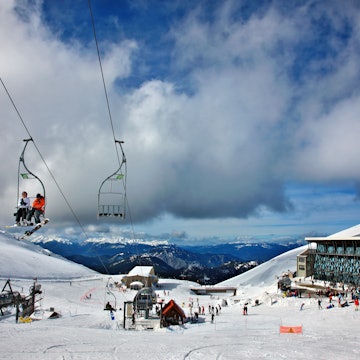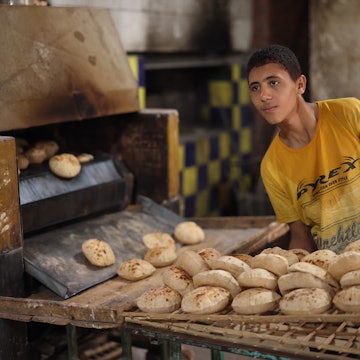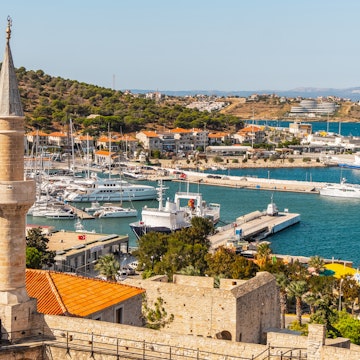

Head to the Cotswolds and take in the cozy autumnal scenes. joe daniel price/Getty Images
In September, Europe's heaving summer crowds ease off, and the temperatures begin to cool a bit. That makes it the perfect time to explore everything the continent has to offer, from cozy English villages to sparkling Turkish coastlines.
We’re sharing some recommendations from our book Where to Go When Europe to help you enjoy an epic early autumn holiday. Here are six of the top places to go in Europe in September so you can truly take advantage of the shoulder season.
1. Cotswolds, UK
Best for exploring idyllic English villages in early autumn sunshine
In the golden light of September, the Cotswolds seem to ooze honey. This land of rolling hills ("wolds"), hiding historic towns and stone hamlets in their clefts and valleys, has long attracted urbanites seeking an English idyll. Visit in September not just to miss the heaviest onslaughts of coach tours, but to enjoy the countryside at its finest and to admire the leaves beginning to spark into their fiery autumn finery in the wonderful arboretums at Westonbirt and Batsford. True, this region is hardly an undiscovered gem: chocolate-box favorites such as Castle Combe and Bourton-on-the-Water can get thronged with tourists in summer. But it’s not hard to find peace, especially if you’re prepared to stretch your legs: a comprehensive network of footpaths laces the region, while the 164km (102 miles) Cotswold Way traces the escarpment, linking charming towns and villages strung along the route between Chipping Campden and Bath.

2. Istria, Croatia
Best for pedaling a culinary and cultural cycling odyssey
Overflowing with asparagus, olives and oysters, there are few tastier destinations than Istria, the triangular peninsula nudging into the Adriatic in far northwest Croatia. And there are few tastier times to explore Istria than September, when grapes are harvested and truffles ripen beneath the forest floor. Bank calorie credits by cycling between feasts: there’s relatively easy pedaling along the coast, where tourist numbers are thinning in September, and where you can roam the lovely Venetian port of Rovinj and admire Pula’s impressive Roman amphitheater. But for the real gastro treats, crank up the calf muscles and explore the truffle-centric hilltop settlements of medieval Motovun, Buzet and tiny Hum in the north, and the wine regions around Buje and Momjan to the northwest – white Malvasia and red Teran are top local tipples. Easing you into your edible odyssey is the Parenzana Trail cycle route, following 123km (77 miles) of disused railway line between Trieste in Italy and Poreč on the Istrian coast, with a short stretch in Slovenia.

3. La Palma, Spain
Best for enjoying stellar hiking through verdant valleys and volcanic calderas
The northwesterly outpost of the Canaries is reputedly the steepest island in the world. Unsurprisingly, it offers some of the most dramatic hiking in this volcanic archipelago – and with around 1000km (621 miles) of footpaths, there’s a diverse array of options. September promises reliable sunshine but thankfully cooling temperatures, as well as improved availability of accommodation after the main summer peak. In the south, trails cross crispy black lava flows to the lighthouse and saltpans at Fuencaliente. Running north along the island’s spine is the Ruta de los Volcanes (Route of the Volcanoes), with dramatic views to coasts on the east and west. The highlight is the full-day trek down through the vast Caldera de Taburiente crater, through rocky ravines and Canarian pine forests. The streets of the capital Santa Cruz de la Palma are also made for walking, lined with enticing Renaissance churches, vintage pharmacies and 18th-century mansions. Beaches – mostly black volcanic sand – provide post-hike relaxation.

4. Bologna, Italy
Best for indulging yourself in one of Italy’s tastiest cities
This isn’t the time or place for dieting. Bologna’s nickname, La Grassa ("the fat one"), gives you an idea of what to expect; home of ragù (aka bolognese), this is Italy’s bulging belly, where life seems to revolve around food. September – when the weather is still warm enough for outdoor eating – means the start of autumn produce: mushrooms, pumpkins, game and chestnuts. These flavors join other delicious ingredients gracing the menus of the city’s lauded restaurants and down-to-earth trattorias, as well as the market stalls and delis of the Quadrilatero (Bologna’s historic gourmet food district). Another Bologna nickname is La Dotta ("the learned one"), a nod to what’s reputedly Europe’s oldest university. Thanks partly to its large student population, the city is awash with lively bars, too. Work off some calories strolling the historic center via the Piazza Maggiore, Neptune Fountain and the Archaeological Museum, and by climbing the 498 steps of the Torre degli Asinelli or, just southwest of Bologna, ambling through 666 portici (arches) to reach the hilltop sanctuary of the Madonna di San Luca.

5. Turquoise Coast, Türkiye
Best for sailing the Aegean or Med aboard a traditional gület
If diving off the wooden deck of a twin-masted sailing boat into the impossible blue of the Mediterranean is your idea of heaven on a hot day, you’re not alone. Back in the 1920s, renowned Turkish writer Cevat Şakir Kabaağaçlı took to hiring local sponge-diving boats to cruise along the so-called Turquoise Coast from Bodrum on what he called "Blue Voyages." Over the following decades, increasing numbers of Turkish and foreign tourists recognized the appeal, and today a wide range of vessels – some more traditional, some built specifically for the cruises – ply the waters along Türkiye's Aegean and Mediterranean coasts from Bodrum, Marmaris and Fethiye, stopping to visit ancient sites such as Letoön and Patara, and to swim, lounge on a beach, eat and drink. It’s a perfect holiday for families, too. By September, temperatures (and tourist numbers) are happily subsiding, but the water’s still bathwater-warm and the sites as alluring as ever.
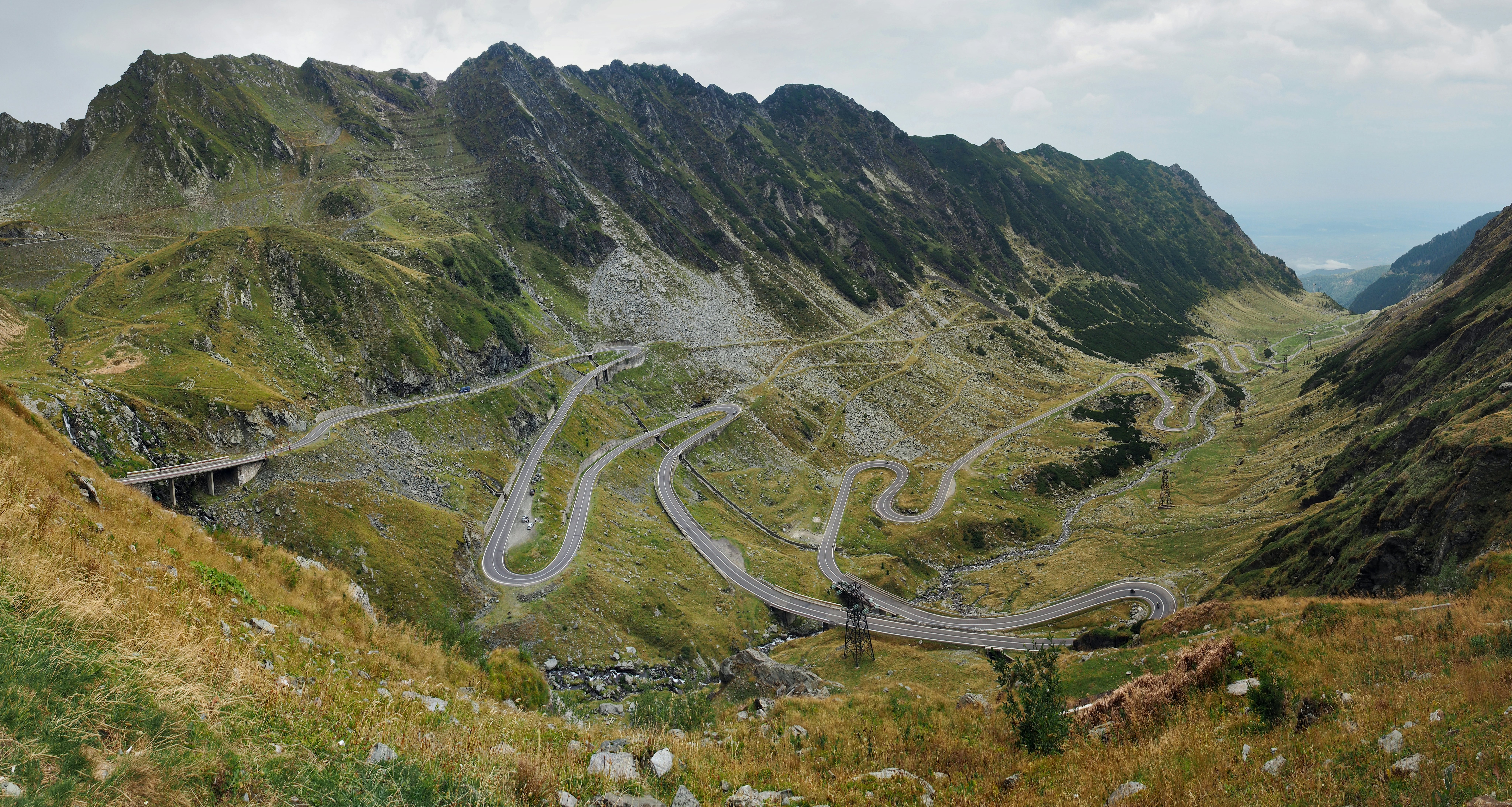
6. Transylvania, Romania
Best for exploring Transylvanian castles via the "world’s best road"
The Transfăgărăşan Hwy has been described as the world’s best road, and it’s certainly in the running. This lofty route, 90km (56 miles) of jinking bends and high passes, was constructed over four years on the orders of dictatorial former ruler Nicolae Ceauşescu to provide a cross-mountain military route between the Romanian regions of Transylvania and Wallachia. September’s the time to traverse its hairpins: the weather’s temperate (snow closes the road between October and June) and autumn colors set hillsides ablaze. Driving north to south, you’ll pass the cascades of Bâlea waterfall and climb to mirror-like Lake Bâlea, continuing to the crag-top ruins of Poenari Castle, a key lair of Vlad Țepeș (aka "the Impaler," inspiration for Stoker’s Dracula), and descending to visit the royal tombs in 16th-century Curtea de Argeş Monastery.






